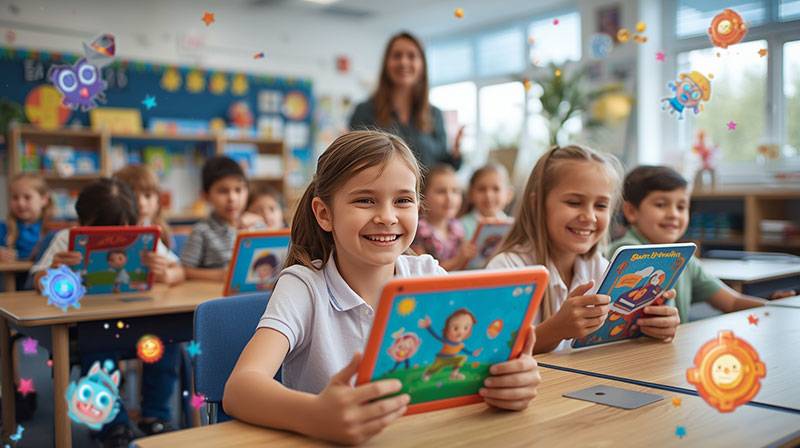How Sprites, Scores and Story Quests Make Reading Feel Like a Game
Reading is often introduced to children as a duty rather than a joy. Many parents and educators struggle with reluctant readers who see books as chores rather than adventures. Yet when reading is reframed through the lens of play, it can transform into something thrilling. By borrowing mechanics from video games — sprites, scores, and quests — storytelling becomes interactive, rewarding, and motivational. Gamified reading does not replace traditional learning but enhances it, turning quiet study sessions into exciting experiences that spark curiosity and imagination.
The Role Of Sprites And Characters In Reading Motivation
Sprites, or animated characters, are central to game design because they bring stories to life in vivid ways. For children, connecting with a character visually can make the act of reading feel more like play. Imagine a book where each page introduces a sprite companion who guides the child through challenges or rewards progress with encouraging feedback. These characters serve as mentors, teammates, or even rivals, helping young readers see themselves as participants in a story rather than distant observers.
In digital reading platforms, sprites can evolve as the child progresses. Completing a chapter may unlock a new accessory, expression, or ability for the sprite, mirroring the gratification players feel in video games. This dynamic engagement makes reading less static and more interactive. It turns milestones into celebrations, reinforcing the sense that stories are games waiting to be played. Much like a tower game earn money and experience, each level or quest rewards effort, making the process of reading feel productive and exciting rather than repetitive.
How Scoring Systems Create A Sense Of Achievement
Scores are another effective way to keep readers engaged. Children thrive on immediate feedback, and points provide a simple, clear measure of progress. For instance, completing a set number of pages could add to a score, while correctly answering questions about the text might award bonus points. Over time, these scores create a sense of accomplishment, allowing children to see their reading journey as a series of victories.
Unlike traditional grading, which can sometimes discourage, gamified scoring systems focus on rewarding persistence and effort. Every attempt contributes positively, and no effort goes unrecognised. This subtle shift changes the way children perceive learning. Instead of reading out of obligation, they read to improve their score, level up, or unlock the next stage.
Scores can also introduce friendly competition. Siblings or classmates can challenge one another to reach milestones, fostering collaboration and teamwork. When framed positively, these contests can build excitement around books and stories, encouraging more frequent engagement with reading material.
The Power Of Story Quests To Fuel Engagement
Perhaps the most powerful element of gamified reading is the inclusion of quests. Quests provide direction, purpose, and structure, much like plotlines in games. For children, being given a mission — such as finding a clue in a chapter, following a character’s journey, or solving a puzzle related to the story — can make the reading experience far more immersive.
Quests break down long books into manageable, bite-sized goals. Instead of focusing on finishing an entire novel, children can concentrate on completing the next quest. This helps reduce feelings of being overwhelmed while maintaining momentum. Each quest also connects directly to the narrative, ensuring that children engage not just with words but with meaning.
For example, a quest might require a child to identify the emotions of a character in a scene or predict what might happen next. These challenges promote deeper comprehension and critical thinking, while still feeling playful. The satisfaction of completing a quest keeps motivation high, much like advancing to the next level in a favourite game.
Gamification And Long-Term Benefits For Reading Habits
While gamified approaches bring immediate excitement, their impact extends far into the future. Children who engage with stories through game-like mechanics are more likely to develop positive associations with reading. Over time, these associations can cultivate lifelong reading habits, where books are seen not just as academic requirements but as sources of enjoyment.
Another benefit is inclusivity. Not all children learn at the same pace or in the same way. Gamification allows flexibility, enabling children to engage with stories at their level while still experiencing success. Whether a child is a reluctant reader or an avid bookworm, sprites, scores, and quests provide personalised motivation that adapts to individual needs.
Moreover, the problem-solving skills fostered through quests and the goal-setting promoted by scoring systems extend beyond reading. These habits translate into other aspects of learning and daily life. Children learn that persistence pays off, small steps lead to big achievements, and challenges can be fun to overcome.
Conclusion
Reading does not need to feel like an obligation when it can be experienced as a playful, interactive journey. By incorporating sprites, scores, and quests, storytelling transforms into a dynamic game where children actively participate rather than passively consume. The joy of unlocking new stages, earning points, and completing missions makes reading both educational and entertaining.
This playful approach encourages children to embrace books as exciting adventures, developing skills and habits that last a lifetime. Just as games captivate players through challenge and reward, gamified reading inspires children to see every page as progress in their own story. In this game, everyone has the chance to win — and the prize is a lifelong love of reading.


